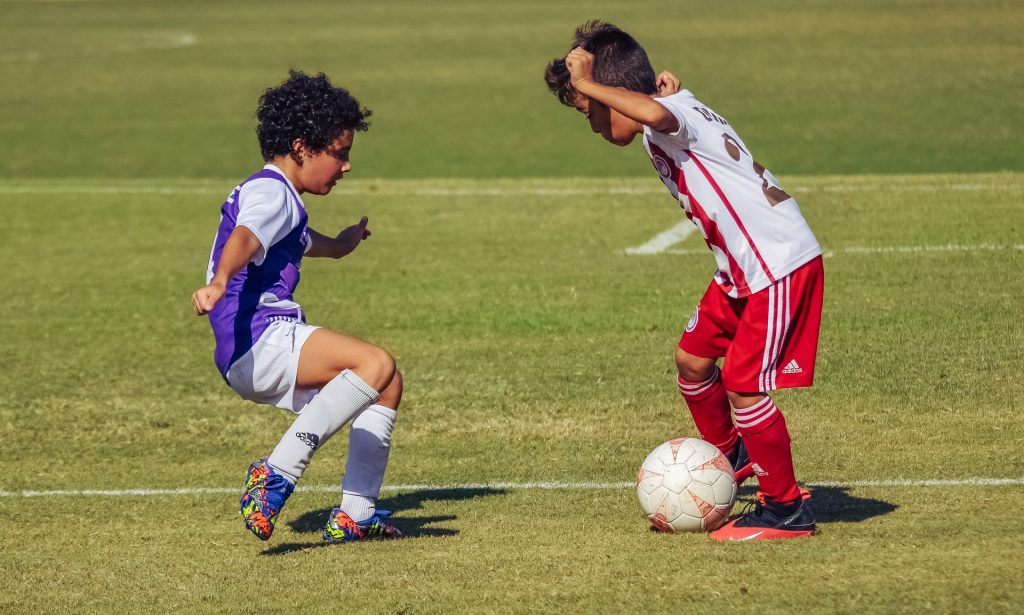"An opposition team is most vulnerable in the seconds immediately after they lose the ball" - Jose Mourinho
A teams' reaction in the moment there is a turnover in possession has become a key tactical concept in the professional game. The playing style of "Gegenpressing" encourages teams to press immediately after losing the ball and then be in a position to exploit the opponents' being out of balance upon winning the ball back. Pep Guardiola had Barcelona adopt the "six second rule" as a way to defend. These moments in games, known as transitions, have become a staple in the development plans of nearly every professional academy in England.
Teaching our players to react quickly in a transition, as with any other skill or principle, is something we can do from the earliest. It requires carefully planning or sessions and considering both attack and defence in our session plan.
Give Both Sides A Dual Purpose
Many an activity will stop when the defender wins the ball. It is understandable why coaches do this. They can reorganise and start again in a structured way. It also appears smoother which of course is more attractive. Take the basic rondo in the video above. The defender wins the ball, the play stops as they switch places with the player who lost it. The rondo then continues with a free pass to begin.
While it looks prettier, it doesn't mirror the chaos that a turnover in possession causes in a game. Players are losing the opportunity to think and react quickly to a change in their roles. Neither the defender or the players keeping the ball away from them have dual purpose - one defends, one attacks. Perfect for the 1990's, not so much in the modern era.
So how can we alter this practice to allow for that experience of a transition and the reaction that is required?
In the above example, we have added goals to the outside of the circle. If the defender wins the ball, they can score in any of the goals. Likewise, it is up to the attacking players to stop them scoring, by becoming compact and limiting the space around the ball. If possession changes over again, the attacking players make the circle wide and the defending player goes back to trying to win the ball.
Regardless of who the ball is with, a reaction that is needed by both parties for any change in possession.
Practice Ideas
Transitional 1 v 1
The above practice is a 1v1 game of line ball. The player in possession attempts to stop the ball on their opponents' line to score.
The practice allows for players to work on their reaction to winning/losing the ball. As an added measure, a second ball is placed to the side of the playing area. As soon as the initial ball is dead (goal scored/out of play), the players play the second ball until a goal is scored/ball goes out of play. The adds another dimension to the practice as players must switch on immediately to the 2nd ball. If they delay, their opponent will score.
From a coaching point of view, the players that transition into attack must observe if they can counter attack immediately, or whether they need to slow their attack down. The player transitioning to defence must make the decision of trying to win the ball back immediately or getting goal side and delaying the attack.
3 v 1 Possession into Penetration
The above practice is a 3 v 1 Rondo style activity. The team in possession attempt to keep the ball away from a defender in the other team.
The basic premise of the practice allows for plenty of transition opportunities. If the defender wins the ball they attempt to pass back to their team mates, who in turn open up and make their playing area as big as possible. The team who lose possession have time to react, stop the ball traveling and keeping it in their own playing area. By adding the progressions shown above, teams have the ability to counter attack at goal as well as deciding when to counter and when to retain the ball.
From a coaching point of view, the players that transition into attack must look for an immediate pass to their team mate or a quick opportunity to score. Defensively, immediate pressure is required on the opponent to force the mistake. Similarly, chasing the ball across to the other playing area while the opponents' are organising themselves is another way to break the play up.
Keep the Ball
The above practice is a possession activity that incorporates 1v1's, combination play and clever decision-making. The player in possession is encouraged to consistently scan the playing area for the angle of the defender's pressure, as well as to find an open team mate.
The transition elements of the practice require players to react to a turnover of possession by make the playing area bigger/more compact. The 1 v 1 players must work to find space (attacking) or eliminate space (defensive) to give themselves a greater opportunity for success. Goals can be included for the team winning possession to score in immediately, thus increasing the need for speed in the transitional moment.
Coaching-wise, communication is key. We want the group to react together and do their best to catch the opposition out of balance. Outside of that, immediate pressure on the ball or a knowledge of where to take the ball if they win is needed from the central players.

